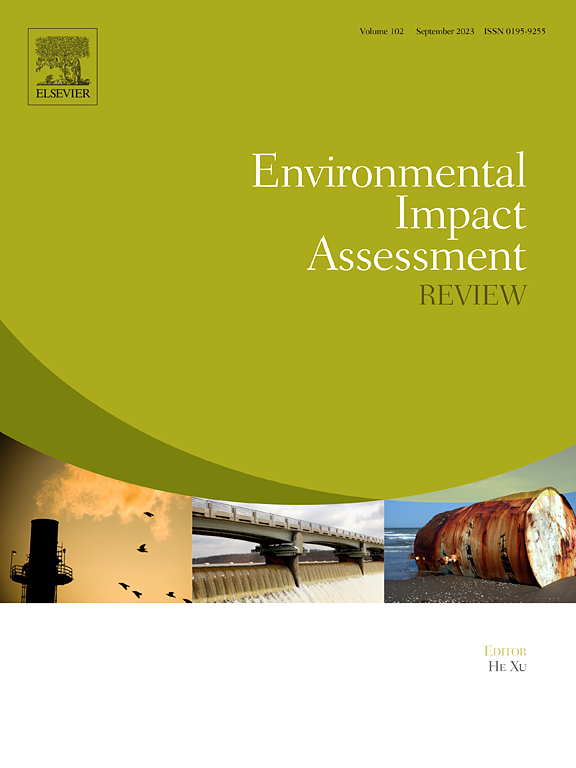Which policy can effectively alleviate the impact of raw material price fluctuations on battery recycling?
IF 11.2
1区 社会学
Q1 ENVIRONMENTAL STUDIES
引用次数: 0
Abstract
China faces a massive wave of retired power batteries, making recycling crucial for sustainability in the electric vehicles (EV) industry. Fluctuations in raw material prices significantly impact the recycling market, highlighting the urgent need for policies to stabilize fluctuations and promote the recycling of power batteries (RPB). This paper is the first to quantitatively reveal the heterogeneous impacts of price fluctuations in nickel, cobalt, and lithium on RPB. It systematically evaluates the effects of disassembly subsidy policy, Research & Development (R&D) subsidy policy, carbon allowance policy, and comprehensive policy in alleviating price fluctuations, providing implications for policymakers. The main conclusions are as follows. (1) Price fluctuations have significant differences in impact on RPB. Cobalt price fluctuations most strongly impact the recycling rate, while lithium price fluctuations most significantly affect economic benefits. (2) Among individual policies, disassembly subsidy, R&D subsidy, and carbon allowance policy all effectively alleviate the impacts of price fluctuations on RPB. The R&D subsidy policy is the most impactful, with an R&D subsidy of 840 million yuan leading to a 118 % increase in the recycling rate and a 101 % increase in economic benefits by 2030 compared to 2023. (3) The comprehensive policy generates a synergistic effect, enhancing the recycling rate by an extra 6 % and economic benefits by 11 % compared to the best-performing individual policy. To maximize the recycling rate and economic benefits, policymakers are advised to prioritize the comprehensive policy. When financial conditions are tight, the R&D subsidy policy should be prioritized as the individual policy.
哪项政策可以有效缓解原材料价格波动对电池回收的影响?
中国面临着一波大规模的退役动力电池浪潮,这使得回收利用对电动汽车行业的可持续发展至关重要。原材料价格波动严重影响回收市场,迫切需要出台政策稳定波动,促进动力电池的回收利用。本文首次定量揭示了镍、钴、锂价格波动对RPB的异质影响。系统评价了拆解补贴政策的效果。研发补贴政策、碳配额政策和综合政策在缓解价格波动方面的作用,为政策制定者提供启示。主要结论如下:(1)价格波动对RPB的影响差异显著。钴价格波动对回收率影响最大,锂价格波动对经济效益影响最大。(2)单项政策中,拆解补贴、研发补贴和碳排放限额政策均有效缓解了价格波动对RPB的影响。研发补贴政策影响最大,研发补贴8.4亿元,到2030年,与2023年相比,回收率提高118%,经济效益提高101%。(3)综合政策产生了协同效应,与表现最佳的单项政策相比,综合政策的回收率提高了6%,经济效益提高了11%。为了使回收率和经济效益最大化,建议政策制定者优先考虑综合政策。在财政条件紧张的情况下,研发补贴政策应作为个别政策优先考虑。
本文章由计算机程序翻译,如有差异,请以英文原文为准。
求助全文
约1分钟内获得全文
求助全文
来源期刊

Environmental Impact Assessment Review
ENVIRONMENTAL STUDIES-
CiteScore
12.60
自引率
10.10%
发文量
200
审稿时长
33 days
期刊介绍:
Environmental Impact Assessment Review is an interdisciplinary journal that serves a global audience of practitioners, policymakers, and academics involved in assessing the environmental impact of policies, projects, processes, and products. The journal focuses on innovative theory and practice in environmental impact assessment (EIA). Papers are expected to present innovative ideas, be topical, and coherent. The journal emphasizes concepts, methods, techniques, approaches, and systems related to EIA theory and practice.
 求助内容:
求助内容: 应助结果提醒方式:
应助结果提醒方式:


